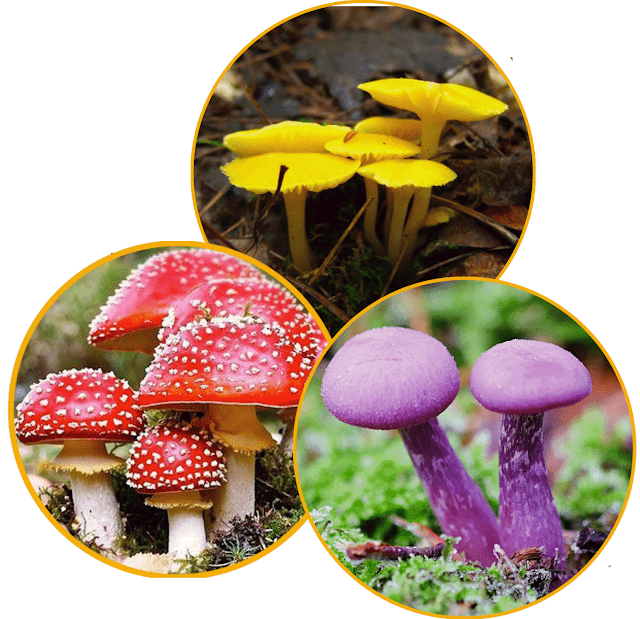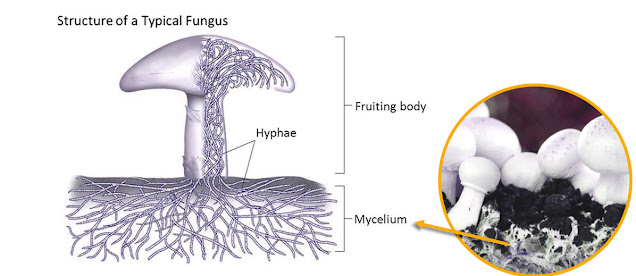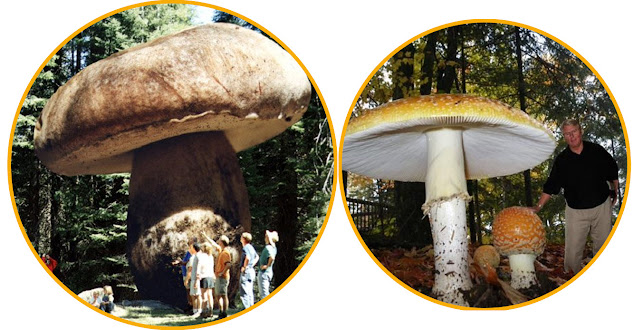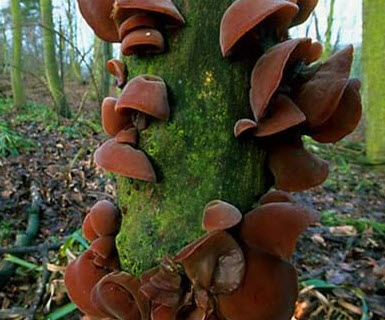Fungi
Fungi are eukaryotic organisms. Among them are unicellular forms, such as yeasts; but most consist of mycelium, which is the vegetative part of a fungus made up of a mass of branching, threadlike cells called hyphae. From a human perspective, many fungi are very useful; we are indebted to them not only for items like bread, beer, and wine, but also for the first antibiotic. Fungi play an essential role in the material cycle of nature. However, many species can cause dangerous diseases.
The fungi kingdom
Taxonomically, fungi used to be included within the plant kingdom. Today, modern analytical methods have determined that fungi are neither plants nor animals, but form an independent group within the eukaryotes.
Most of the edible fungi known to us have a finely branching network of thread like cells, the mycelium, which is usually hidden, and the fruiting body that we perceive as the actual fungus. The mycelium consists of individual, filamentous hyphae, which are generally subdivided into individual compartments by so-called septa.
Growth and reproduction
Growth of the hyphae occurs at the tip and frequently there is branching, so that gradually a dense network of hyphae develops. The cell wall of fungi is made up primarily of chitin. Reproduction of fungi occurs via spores that are formed asexually or sexually. Asexual spores (conidia) are often budded off from spore carriers, while special fruiting bodies are formed during sexual reproduction. Depending on the species, the spores simply fall out of the fruiting body and are distributed by the wind, or sometimes they are actively catapulted out. Yeasts reproduce principally by means of cell division. Based on particular characteristics, fungi are placed into several groups: Basidiomycete (such as pileate mushrooms), Ascomycete (e.g., true yeasts, sac-, or cup fungi), Zygomycete (e.g., black bread mold), Glomeromycete (certain Mykorrhiza fungi), and the Chytridiomycete, which, among others, include a number of plant pathogens, causing infectious diseases.
Ancient Organism
Fungi can grow to significant sizes. Investigations in the United States revealed that the hyphae from a single specimen Basidiomycete (Armillaria ostoyae) covered an area of about 3.5 square miles (9 km 2) and was estimated to weigh approximately 600 tons. This places it among the largest and longest lived organisms on the Earth. Such growth would presumably require a period of more than 2.000 years.
 |
| Pict: Fungi species exist in a variety of distinctive shapes and sometimes striking colors. |
 |
Pict: The threadlike mycelium, often hidden beneath soil or vegetation, absorbs nutrients.
|
 |
Pict: A fungi specimen may be largely hidden underground and cover large areas.
|
 |
| Pict: Fungi are found in many different moist environments and play an important role in the recycling of decomposing materials. Some also form parasitic or symbiotic relationships with living plants. |




